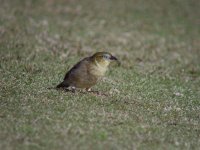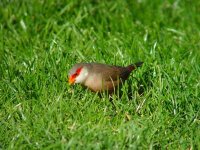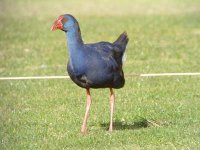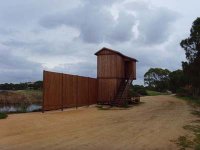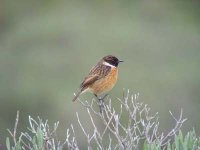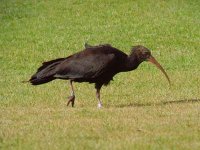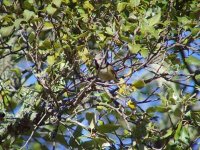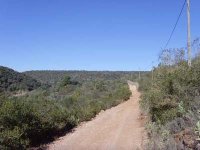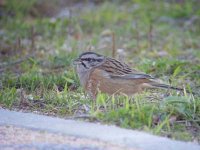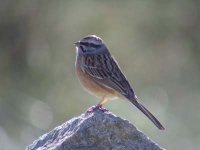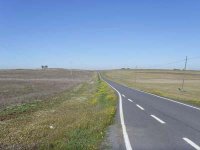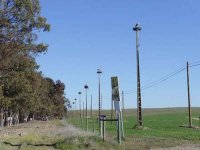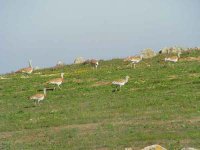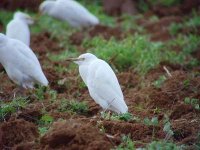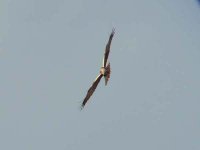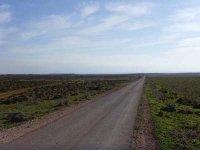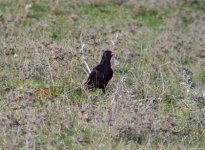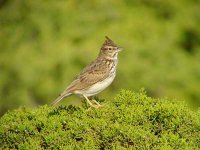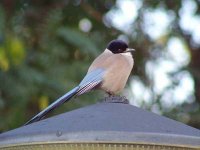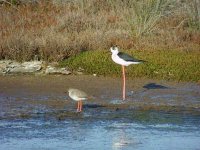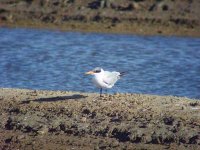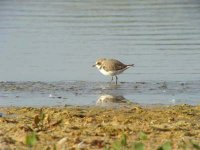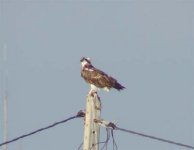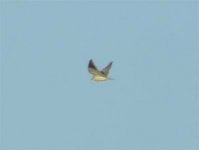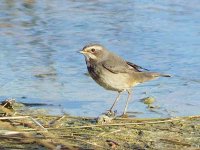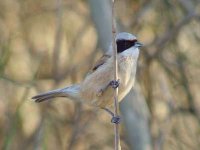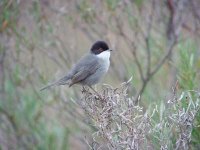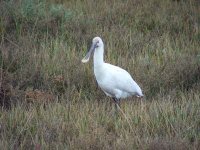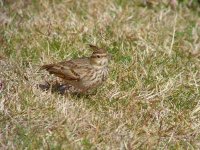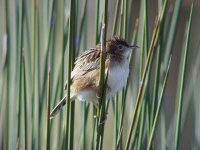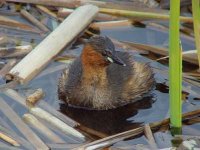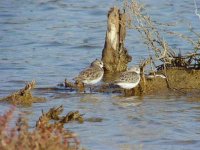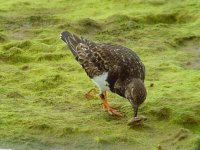Andrew
wibble wibble
Monday 15th December 2008
Ludo Farm. Portugal.
A short and smooth flight brought us from the cold of Bristol airport to the warmer climes of the Algarve this morning. Picking up the hire car, a black Ford Fiesta, from Thrifty Bravacar was also a cinch and we were gazing at the birds at Ludo Farm in just over half an hour after the plane touched down in Faro.
There was an easterly breeze so it was not as balmy as we had hoped but a lot warmer than back home. Caspian Terns quartered the lagoons for prey, White Storks drifted high up, Fan-tailed Warblers foraged around the scrub below us and a few waders probed the mud of the Ria Formosa on a receding tide.
I was too tired to really start birding so after a late lunch, it was westwards to Vilamoura for some groceries and check into our apartment at Oasis Village. There were inadvertent sightings of typical Algarve birds on the way such as Cattle Egrets, Azure-winged Magpies and several Chiffchaffs.
We were trying Oasis Village instead of Bayside Salgados this year to be nearer to the prime birding location of Quinta do Lago. The apartment was very well equipped and spacious.
The evening was spent enjoying one of my favourite beers, Sagres Bohemia 1835, eating tomato ketchup flavoured Ruffles crisps and watching the one and only Fernando Mendes on ‘O Preco Certo’, the Portuguese version of ‘The Price is Right’. It was good to be back!
Tuesday 16th December 2008
Falesia Lagoon & Forte Novo. Portugal.
There was a cold easterly wind today but it remained dry and warmed up by the afternoon. After a good night’s sleep the day commenced at the bridge overlooking Falesia Lagoon and it’s large reed beds. This site is within spitting distance of Oasis Village. There could not have been a better start as I got good views of three Penduline Tits. There were also four Marsh Harriers cruising over the reed beds and the distant fields near Parc Ambiental. A lone Purple gallinule was on the far side of the lagoon. A flock of thirty Waxbills flew past. Hirundines were well represented by four House Martins and a minimum of ten Crag Martins hunting for insects over the lagoon.
We were staying local today and before we came here I had spotted a small ‘estuary’ just east of Quarteria on Google Earth and we went there next. This was Forte Novo and it was actually a lake dammed at the southern end by a beach. We parked at Praia do Forte Novo and walked east along the top of a low sandstone cliff edged by a pine wood to reach the lake. Carrying on eastward along another low pine clad cliff puts you at a large marshy area.
Plenty of gulls were on the lake so this would be a good spot to search for any rarer gulls. A few waders were also present on the southern end of the lake as well as in the pools at the eastern marsh. This was a great find as it receives no mention by previous birders in their trip reports and clearly has potential.
I filled up a whole page in my notebook with sightings from this place. The most remarkable thing was the amount of wintering Chiffchaffs. The trees were dripping with them with a minimum of a hundred birds being present. The café building and it’s few trees by the lake had about twenty birds for example. I know the Algarve has it‘s fair share of wintering Chiffchaffs but this was spectacular.
A pale phase Booted Eagle sent all the gulls up in a panic. The eagle cruised low over the lake for some time and at one point came close overhead to provide the best views of this species I have had. Another pale phase bird was also present a few hundred yards away.
The pick of the birds recorded at Forte Novo were four Crested Larks, ten Serins, six Red-crested Pochards, two Avocets, a Cattle Egret, a female Black Redstart, Yellow-legged Gulls, two Kentish Plovers, a Mediterranean Gull, five Azure-winged Magpies, a Hoopoe, a Short-toed Treecreeper, two Kingfishers, a Marsh Harrier, a Common Sandpiper and a Black-winged Stilt. This place warrants closer scrutiny on future trips as well as by other birders especially during migration periods.
After a bit of shopping we returned to Falesia Lagoon and saw the Penduline Tits once more. Now the sun was behind me so I managed some pictures of these delightful little birds. A male Sardinian Warbler also put in an appearance to push the day’s list to forty nine species before we returned for chicken casserole and to watch large numbers of Azure-winged Magpies roosting in the mimosa trees at Oasis Village.
Ludo Farm. Portugal.
A short and smooth flight brought us from the cold of Bristol airport to the warmer climes of the Algarve this morning. Picking up the hire car, a black Ford Fiesta, from Thrifty Bravacar was also a cinch and we were gazing at the birds at Ludo Farm in just over half an hour after the plane touched down in Faro.
There was an easterly breeze so it was not as balmy as we had hoped but a lot warmer than back home. Caspian Terns quartered the lagoons for prey, White Storks drifted high up, Fan-tailed Warblers foraged around the scrub below us and a few waders probed the mud of the Ria Formosa on a receding tide.
I was too tired to really start birding so after a late lunch, it was westwards to Vilamoura for some groceries and check into our apartment at Oasis Village. There were inadvertent sightings of typical Algarve birds on the way such as Cattle Egrets, Azure-winged Magpies and several Chiffchaffs.
We were trying Oasis Village instead of Bayside Salgados this year to be nearer to the prime birding location of Quinta do Lago. The apartment was very well equipped and spacious.
The evening was spent enjoying one of my favourite beers, Sagres Bohemia 1835, eating tomato ketchup flavoured Ruffles crisps and watching the one and only Fernando Mendes on ‘O Preco Certo’, the Portuguese version of ‘The Price is Right’. It was good to be back!
Tuesday 16th December 2008
Falesia Lagoon & Forte Novo. Portugal.
There was a cold easterly wind today but it remained dry and warmed up by the afternoon. After a good night’s sleep the day commenced at the bridge overlooking Falesia Lagoon and it’s large reed beds. This site is within spitting distance of Oasis Village. There could not have been a better start as I got good views of three Penduline Tits. There were also four Marsh Harriers cruising over the reed beds and the distant fields near Parc Ambiental. A lone Purple gallinule was on the far side of the lagoon. A flock of thirty Waxbills flew past. Hirundines were well represented by four House Martins and a minimum of ten Crag Martins hunting for insects over the lagoon.
We were staying local today and before we came here I had spotted a small ‘estuary’ just east of Quarteria on Google Earth and we went there next. This was Forte Novo and it was actually a lake dammed at the southern end by a beach. We parked at Praia do Forte Novo and walked east along the top of a low sandstone cliff edged by a pine wood to reach the lake. Carrying on eastward along another low pine clad cliff puts you at a large marshy area.
Plenty of gulls were on the lake so this would be a good spot to search for any rarer gulls. A few waders were also present on the southern end of the lake as well as in the pools at the eastern marsh. This was a great find as it receives no mention by previous birders in their trip reports and clearly has potential.
I filled up a whole page in my notebook with sightings from this place. The most remarkable thing was the amount of wintering Chiffchaffs. The trees were dripping with them with a minimum of a hundred birds being present. The café building and it’s few trees by the lake had about twenty birds for example. I know the Algarve has it‘s fair share of wintering Chiffchaffs but this was spectacular.
A pale phase Booted Eagle sent all the gulls up in a panic. The eagle cruised low over the lake for some time and at one point came close overhead to provide the best views of this species I have had. Another pale phase bird was also present a few hundred yards away.
The pick of the birds recorded at Forte Novo were four Crested Larks, ten Serins, six Red-crested Pochards, two Avocets, a Cattle Egret, a female Black Redstart, Yellow-legged Gulls, two Kentish Plovers, a Mediterranean Gull, five Azure-winged Magpies, a Hoopoe, a Short-toed Treecreeper, two Kingfishers, a Marsh Harrier, a Common Sandpiper and a Black-winged Stilt. This place warrants closer scrutiny on future trips as well as by other birders especially during migration periods.
After a bit of shopping we returned to Falesia Lagoon and saw the Penduline Tits once more. Now the sun was behind me so I managed some pictures of these delightful little birds. A male Sardinian Warbler also put in an appearance to push the day’s list to forty nine species before we returned for chicken casserole and to watch large numbers of Azure-winged Magpies roosting in the mimosa trees at Oasis Village.




